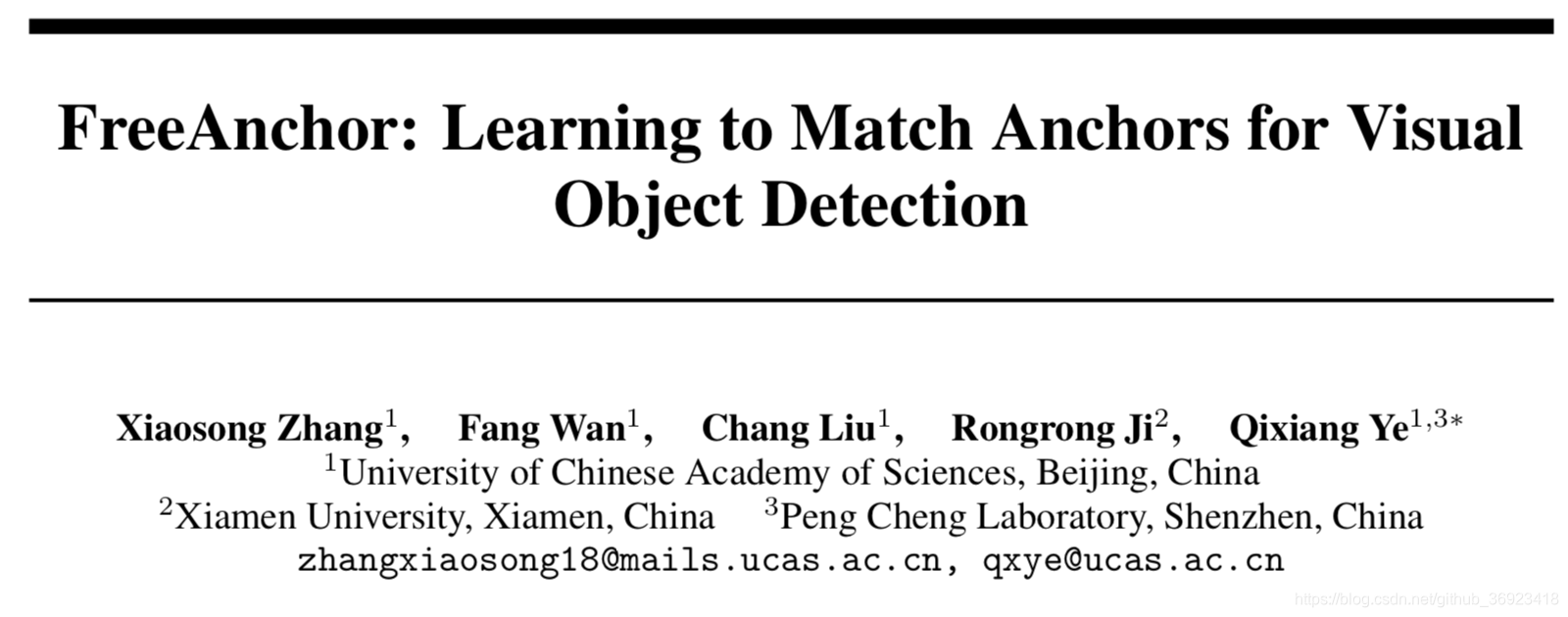 一、简介
一、简介
这些年已经有不少基于深度学习的目标检测的文章了,从最开始的Anchor based 到后来的 Anchor Free。但是解读这篇文章,主要是由于他的出发点比较新颖---Free Anchor。
虽然叫Free Anchor,但是依然是Anchor based的方法,只不过他打破了一直以来的Anchor分配机制。
二、回顾Anchor分配机制
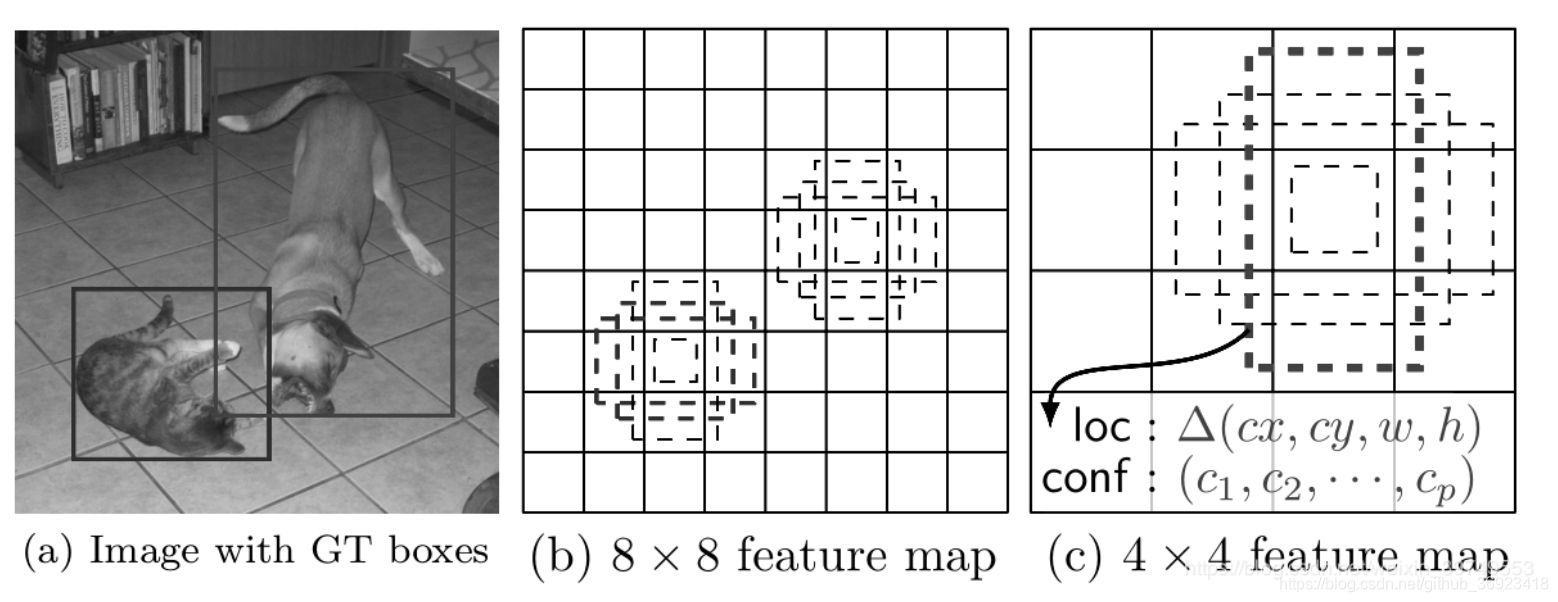
上图是来自于SSD的分析,对于不同尺度大小的feature map,每个pixel都会负责预测k个框,这个k就是预先设置好的Anchor数量,图中的虚线框也就是anchor。
以前,在进行对于所有预测出来的结果box,进行loss计算的时候,会将anchor+偏移=结构box,与groundtruth进行比对,这个比对的过程就是利用IoU,只要预测框与目标物体的框IoU达到了一定阈值,那么这个框就算是正样本,当然如果一个anchor与多个目标物体都达到了阈值怎么办?直接选IoU最大的就好了!
其他的都是负样本~~~,当然训练过程中会设置正负样本的比例,因为通常负样本会很多!
这个方式,看似非常的合理,并且一直沿用至今,实际应用中也是非常有效的!但是这个方式毕竟也是经验式的!
大家可以看下面这例子:


看完这两张图,想必大家不说也懂我想说什么了!!!!!嗯~~~~,词穷~~~~!因为现实世界中很多的目标物体,并不是规则,比如月亮,他们是偏心的!这也就导致了越是中心的点的feature 越是背景!无法代表这个目标,红色框与绿色框虽然IoU很高,如果按照传统方式判定为正样本!显然不好!
三、回到文章中来
在文章中,把传统的Anchor分配方式称之为“IoU restriction”!文章对于传统方式给出了两方面的评价:1、并不是所有的目标物体都是规则的,很多时候物体是偏心的,瘦长的!或者说物体会被遮挡,比如图像中猫挡住了笔记本电脑,导致了笔记本电脑属于偏心的目标!2、On the other hand, it is infeasible to match proper anchors/features for objects using IoU when multiple objects come together.我感觉这句话有点重复吧,总之就是说传统的方式不灵活!毕竟对于不灵活,不智能的点进行优化,基本上都能提升效果!
文章提出了自己的方法,并且把这个方式和损失函数联系起来,从而可以优化!和损失函数联系起来的方式叫“极大似然估计”,添加上负号和log,就得到了可以最小化的损失!
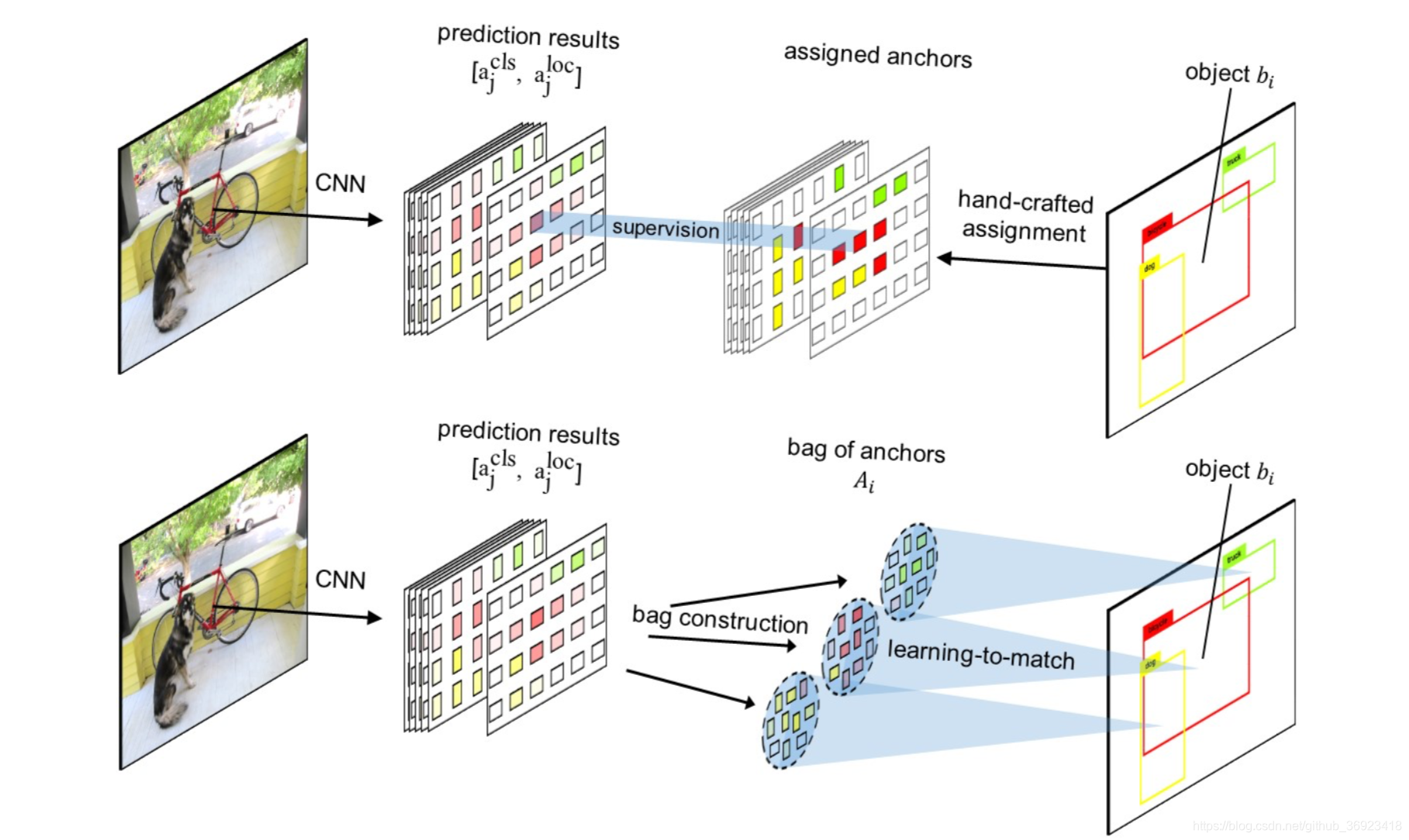
上图中,上半部分是传统的anchor分配方式,基于这种方式无论这个pixel位置是否包含了“有效特征”,只要IoU达到了就是正样本!在计算损失函数的时候,就比必须带上它!这个时候,基本上我们也就发现问题了:引入了基于背景特征的正样本!强行让背景信息预测!

这个公式就是传统的训练损失,A是anchor的集合,A_代表饿了没有配上正样本的那些,因此就是负样本。B代表了label中的目标全体,Cij则是0,1值,用于表示第i个目标和第j个anchor配上了。分类用BCE损失,回归用SoomthL1.
在本文中,利用极大似然的想法来建立损失函数:因此上面的损失函数就可以转换为如下公式:

四、文章核心
上面的公式中,“类别”和“回归”这两部分是分开计算的!本文的以思想就是,一个pixel位置是否能够预测box,应该具有两个特点:“能够拥有高的分类置信度” 以及 “框的IoU也高”。


引入这两个公式,对应了常会用到的:召回率 与 精度,两个指标。对于召回率而言,需要为每个目标都能提供至少一个anchor,并且基于这个anchor的两类特性都应该接近对应的label。对于精度而言,“classify the anchors of poor localization into the background class”

这个部分代表了,第j个anchor与所有的目标b都没有配对上的概率,这个概率的计算来自以上的计算方式,1-能配上的最大概率。当然,想要在网络模型中计算,就要建立一些公式来实现:


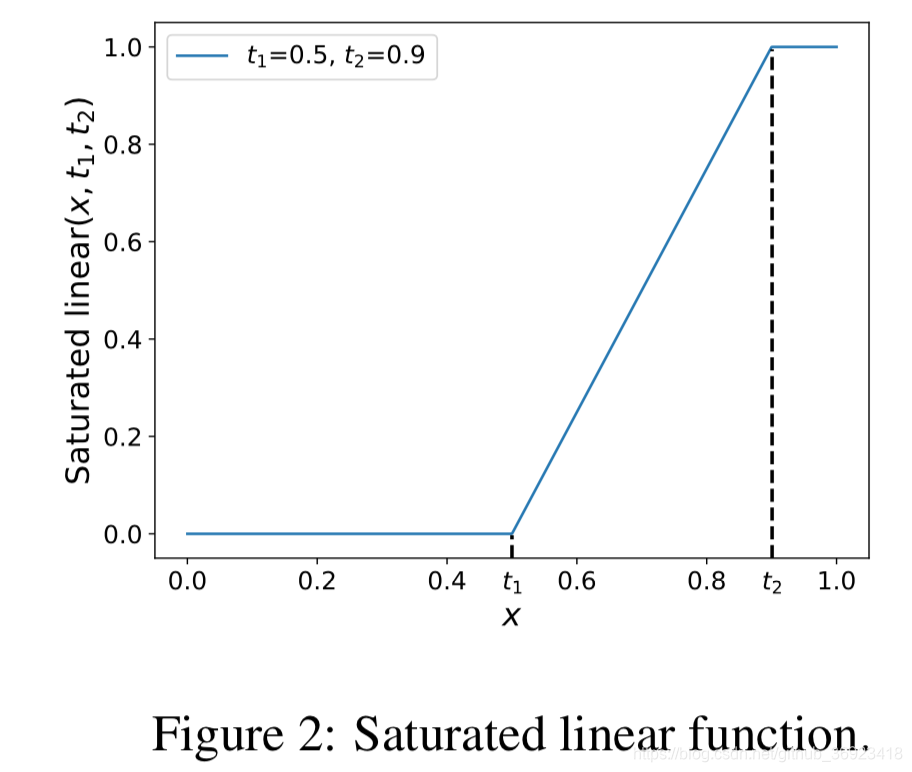
到这里,也就基本上知道这个网络需要优化的目标函数的计算方式了:

五、最最最核心部分到了
 损失函数,需要把极大似然换成最小化的形式。
损失函数,需要把极大似然换成最小化的形式。
那么如果只是简单的使用max来完成,Free Anchor,显然大家会觉得有点敷衍!!!而且效果肯定也不太行,原因如下:训练初期,所有的anchor置信度都很低,那么这个时候选一个max的?有没有意义?(我觉得这应该也是可以的,现实一种随机,或者平均?有没有大佬说一说?)
处于上面这个原因,作者提出了一种替代直接使用max的方法:
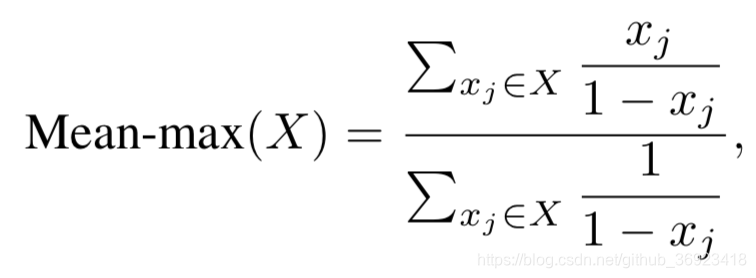
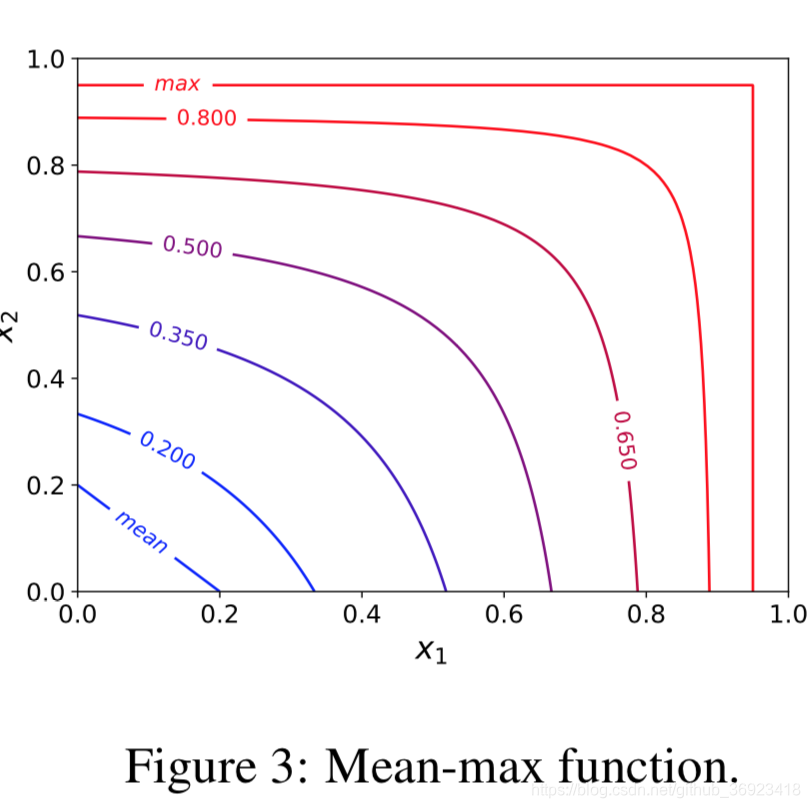
这个函数,一开始会是一种平均策略,随着训练的加深,anchor们的,置信度开始出现差异,最终是一个max。因此进一步优化后的损失函数如下,加入了两个权重和focal loss:


Ai怎么来的呢?就是对于bi这个目标,利用IoU,从anchor们中选择top n个,就形成了一个A i 子集。文中原话如下:

六、效果对比


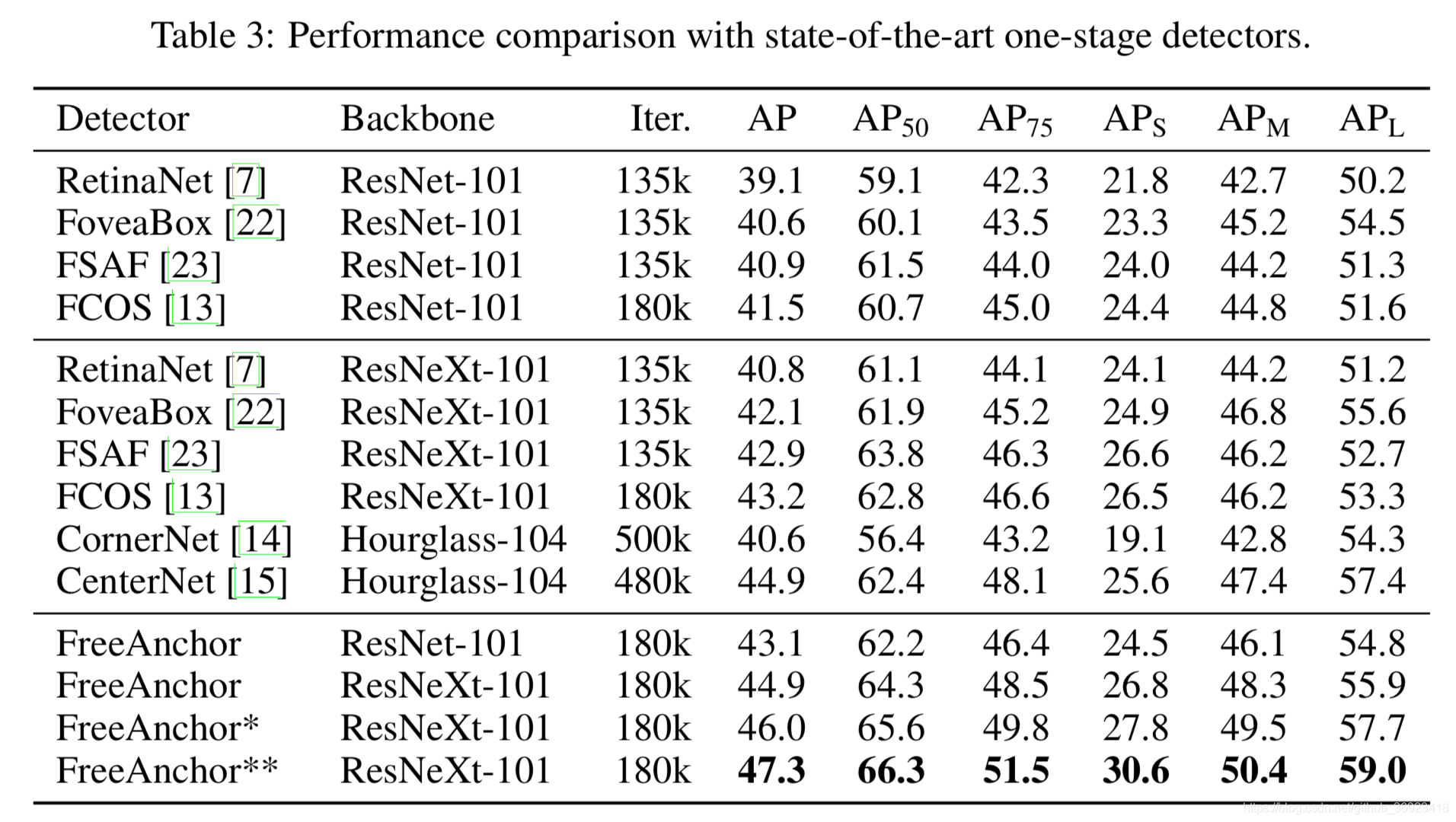







 探讨FreeAnchor方法如何革新目标检测领域,通过改进传统Anchor分配机制,解决目标偏心和遮挡问题,提高检测精度。
探讨FreeAnchor方法如何革新目标检测领域,通过改进传统Anchor分配机制,解决目标偏心和遮挡问题,提高检测精度。
















 470
470

 被折叠的 条评论
为什么被折叠?
被折叠的 条评论
为什么被折叠?








